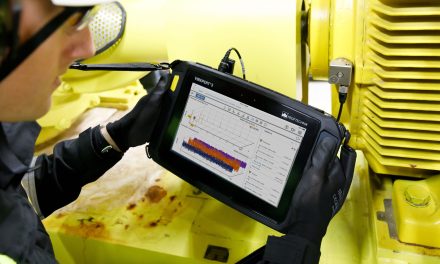 Regional and international food industry safety guidelines are changing all the time and it is important for manufacturers to be aware of any amendments to guidelines and regulations regarding production lines. However, there are a number of myths that persist regarding food safety inspection standards that must be dispelled according to Neil Giles, marketing communications manager, Mettler-Toledo Product Inspection
Regional and international food industry safety guidelines are changing all the time and it is important for manufacturers to be aware of any amendments to guidelines and regulations regarding production lines. However, there are a number of myths that persist regarding food safety inspection standards that must be dispelled according to Neil Giles, marketing communications manager, Mettler-Toledo Product Inspection
By separating myths from facts, manufacturers will gain a greater understanding of the regulations governing the industry, and this will help them guarantee the quality of their products while ensuring consumer safety, Giles says.
Myth 1: Compliance with one standard guarantees compliance with all
While a company may need to comply with any number of regional and international food safety regulations, the specific standards that must be met will vary depending on the manufacturer, the countries in which it operates and the retailers or customers it wants to supply. Manufacturers must carefully consider which standards they must meet to operate in their respective markets. They will need to adapt their product inspection systems and processes accordingly to adhere to required guidelines. Each safety standard of today has variations to deal with specific threats to food quality and safety.
The British Retail Consortium (BRC) Food Standard is now required by a majority of retailers in a number of countries for private label products and, increasingly, for branded products.
The International Featured Standards (IFS) are similar to the BRC Global Standards, but are applicable chiefly to EU markets, particularly France and Germany. However, the Food Safety System Certification (FSSC) 22000 is an international quality standard that offers both a broad food safety management system framework as well as specific criteria for controlling risks in the manufacturing process.
 Myth 2: Standard inspection systems fit all products
Myth 2: Standard inspection systems fit all products
Each product and production line is different and brings with it unique challenges to comprehensive inspection. Standard contaminant detection and checkweighing systems can be applicable in certain cases, but many production applications require a customised solution. If this is the case, each machine must be designed and set up to suit the needs of the production line, the products it is inspecting and the requirements of each applicable food safety standard to ensure complete regulatory compliance.
Myth 3: Manual rejection by operators is as good as automated systems
The fact is, automated rejection systems are far more reliable than manual systems, and increasingly safety standards are demanding the installation of automatic systems on food production lines. Alternatively, conveyors must be able to be stopped when contamination is detected so that substandard products or foreign objects can be removed. For example, BRC Food Standard Version 6, Clause 4.10.3.3, introduced in January 2012, states that x-ray inspection systems or metal detectors should incorporate either an automatic rejection device or a belt stop system. BRC Food Standard Version 6 also requires food manufacturers to implement traceability and other security systems to prevent contamination from occurring.
Myth 4: There is no need to test product inspection systems once installed
Manufacturers are required to regularly test the performance of their x-ray inspection, metal detection and checkweighing systems to ensure they are all operating correctly. They must also continue to meet pre-set strict sensitivity standards.Many new food safety standards stipulate particular procedures to make certain comprehensive testing of product inspection equipment has taken place. The BRC Food Standard Version 6 contains recommendations regarding sample materials to be used in testing, sample sizes and locations of test samples on production lines.
Myth 5: There is no need to train all employees on food safety regulations
An increasing number of food safety regulatory authorities are insisting that all employees be fully trained on standards compliance, correct operations and system test procedures. For example, the IFS Food Standard Version 6 states that the senior management of food companies must ensure employees are aware of their responsibilities relative to food safety and quality.
Myth 6: One critical control point at the end of a production line is enough
In some simple production processes, a single critical control point (CCP) is sufficient. In other more complex processes or applications where multiple processes are involved, there is an increased risk of contamination and it may be prudent to install ‘in-process’ CCPs. Ultimately in many cases, in order to demonstrate due diligence and the ability to trace contamination to the source, it is necessary to establish CCPs throughout the entire production process.
Myth 7: The Global Food Safety Initiative is a certification
The Global Food Safety Initiative (GFSI) is a non-profit foundation managed by The Consumer Goods Forum and is dedicated to harmonising food safety standards around the world to make it easier for food manufacturers to comply with multiple regulations. Examples include the BRC Food Standard, IFS Food Standard, Safe Quality Food (SQF) Code and the FSSC 22000.
Myth 8: There is no need to keep records of product inspection
The required length of time to hold onto product inspection system documentation varies from region to region, as well as from manufacturer to manufacturer. However, it is in the brand owner’s best interest to retain performance records for as long as possible. Many food products, particularly dried and processed foods, have extended shelf lives. It is necessary to take this into consideration when planning and organising the data logging and storage system of a production line. This will ensure that food manufacturers can demonstrate due diligence should a problem occur.
Myth 9: Fault condition monitoring in inspection devices is not necessary
Many food safety regulations now also require product inspection systems to include advanced condition monitoring in preference to traditional fault monitoring. A fault monitoring system simply alerts operators when there is a fault in the product inspection machine, whereas an advanced condition monitoring system gives early warning of adverse trends in performance before the failure actually occurs and before safety standards are compromised. This offers manufacturers the opportunity to plan maintenance and rectification work
Myth 10: All auditors operate with the same structure
It simply is not the case that all audits are the same. The audit procedure will vary according to the standard the food manufacturer is expected to comply with, the auditing company, the records available from the manufacturer and the particular application. Depending on the type of contaminant threat, certain food products require specific auditing procedures which should be taken into account when considering data logging and storage. Correctly documented and logged performance records can help manufacturers reduce audit times and the intensity of investigations. When documentation on product inspection tests and contaminant detection is logically stored and comprehensive, there is less need to probe deeper for information on processes and validation procedures.
Meeting industry Standards
The standards governing the food industry are changing all the time as manufacturing processes evolve. Food manufacturers must have the correct product inspection systems in place to guarantee that they meet the increasingly stringent demands imposed on them by governments and retailers. Successful brand owners know they need to fully understand and comply with changing food safety regulations to ensure their products are fit for sale in regional and worldwide markets.




